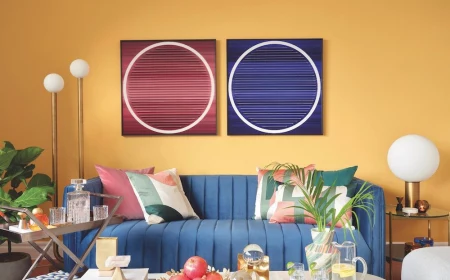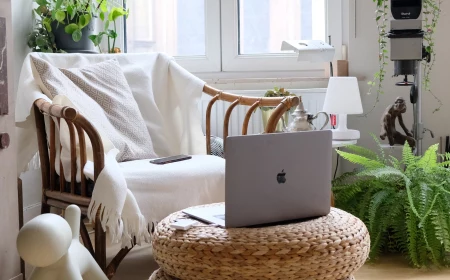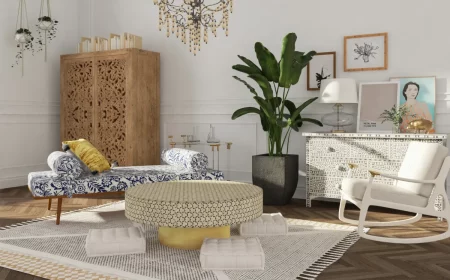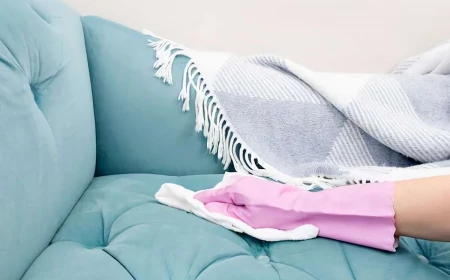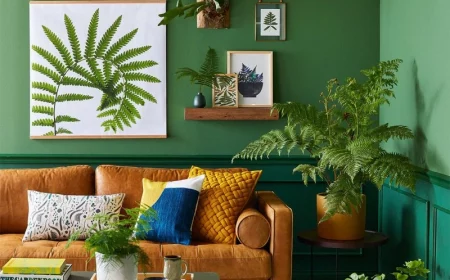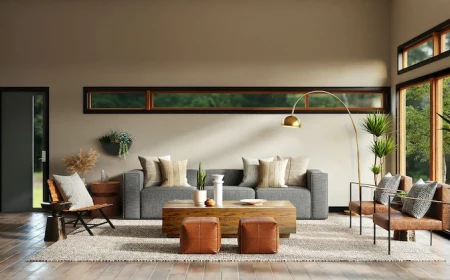Your Living Room Feels Off? Here’s the Secret to Making It Feel Like Home
I’ll never forget a client who, on paper, had done everything right. They had the designer sofa, the cool art, and a beautiful open-concept space. But they called me because, as they put it, their living room felt “like a doctor’s waiting room.” It was cold, sterile, and the last place anyone wanted to relax. They’d followed all the popular advice but were missing the secret ingredient. A truly comfortable living room isn’t about a checklist; it’s about how you layer elements to create a feeling.
In this article
After years of working in homes of every shape and size, I’ve learned that making a space feel genuinely inviting is a craft. It’s less about a shopping spree and more about mastering the fundamentals: light, texture, layout, and color. These are the tools we use to turn a plain room into the heart of the home. This isn’t about chasing trends—it’s about applying proven principles to create a space that just feels right, for good.
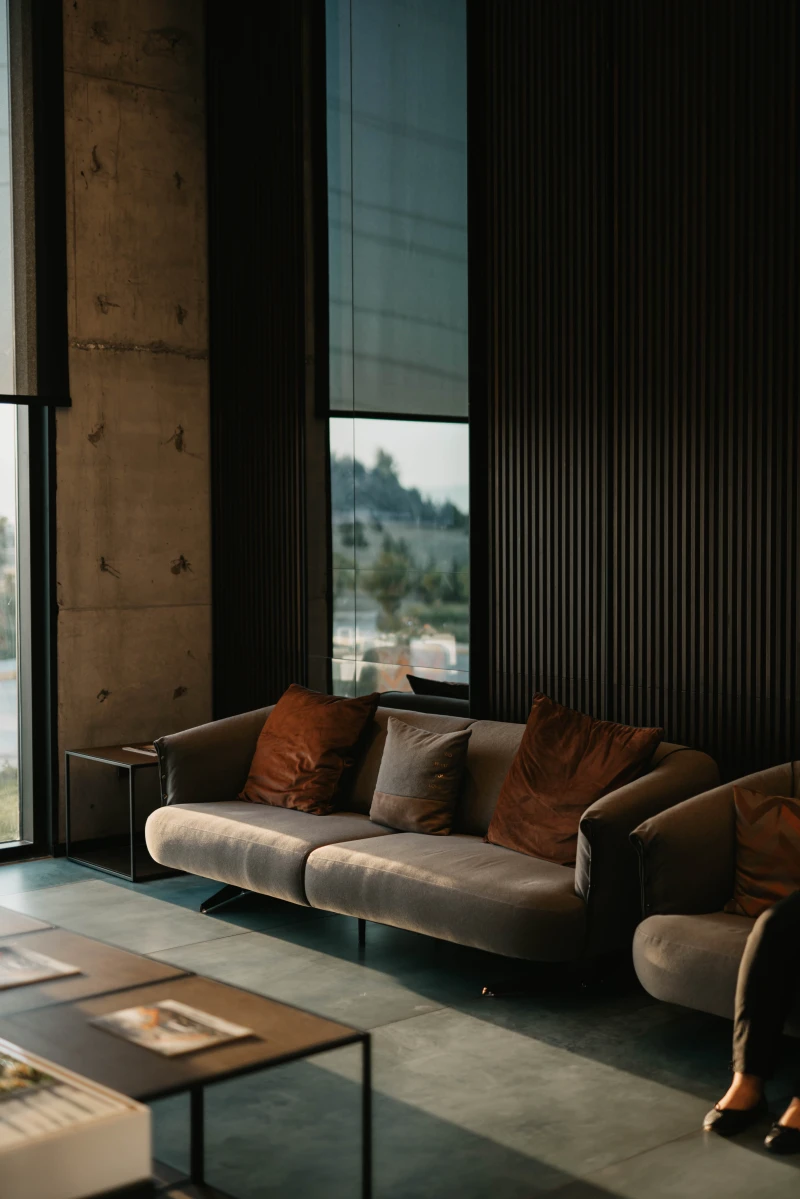
First Things First: Let’s Talk About Light
Before you even think about paint or furniture, you have to understand the light in your room. Honestly, light is the single most powerful element you have. It sets the mood, changes how you see color, and can make a tiny room feel airy or a huge room feel cozy. So often we try to fight the light we have, but the real pro move is to work with it.
Working With Your Natural Light
The direction your windows face changes everything. I always start a project by just sitting in the room at different times of day to see what the light is doing. It’s a game-changer.
- North-facing rooms: You get cool, indirect light all day. It’s consistent and great for not fading artwork, but it can feel a little chilly. The fix? Lean into warmer paint colors (think creamy whites, warm grays, or beiges) and pile on rich textures.
- South-facing rooms: These are blasted with bright, strong light most of the day. This intensity can wash out pale colors and create some serious glare. It’s a great chance to be bold with deeper, more saturated colors that can hold their own against the brightness.
- East-facing rooms: You get that beautiful, crisp morning light, but it gets cooler and shadowier in the afternoon. A design here has to work for both moods. Layered lighting (more on that in a sec) is your best friend.
- West-facing rooms: They can feel a bit dark in the morning but are blessed with a warm, golden glow in the afternoon and evening. Just a heads up: this light can make your paint colors look much more yellow or orange than they actually are.
Knowing this saves you from costly mistakes. A cool gray that looks chic in a bright, south-facing room can feel downright depressing in a north-facing one. I learned that lesson the hard way early on, having to repaint an entire room after my initial choice made it feel like a cold, sad box.
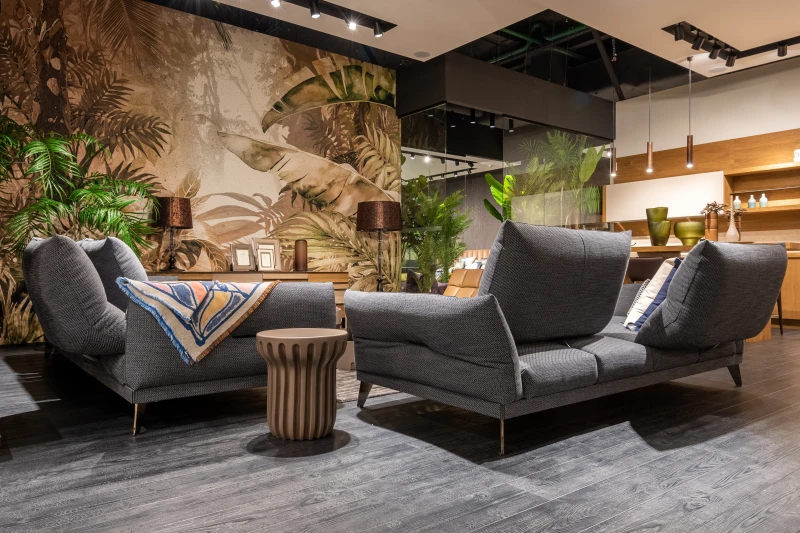
Getting Your Artificial Light Right
When the sun goes down, your light bulbs take over. And this is where so many amazing rooms fall flat. Don’t worry, it’s an easy fix once you know what to look for. There are two numbers on the bulb’s box that matter most.
Here’s a fast upgrade: Go look at one of the light bulbs in your living room right now. Find the Kelvin rating, usually written as a number followed by a “K.” Is it between 2700K and 3000K? If not, swapping it is the single cheapest and most impactful change you can make today. Anything over 3500K is going to give you sterile, office-like vibes.
The other secret is the Color Rendering Index (CRI). It’s a scale from 0 to 100 that measures how accurately the light shows true colors. The sun is a perfect 100. Cheap LEDs often have a low CRI (around 80), which is why they can make your skin look weird and your beautiful sofa look dull. Always, always choose bulbs with a CRI of 90 or higher for your living spaces. It’s a small detail that makes everything—and everyone—in the room look better. Look for quality brands like Cree or Philips at your local hardware store; they almost always have high-CRI options.
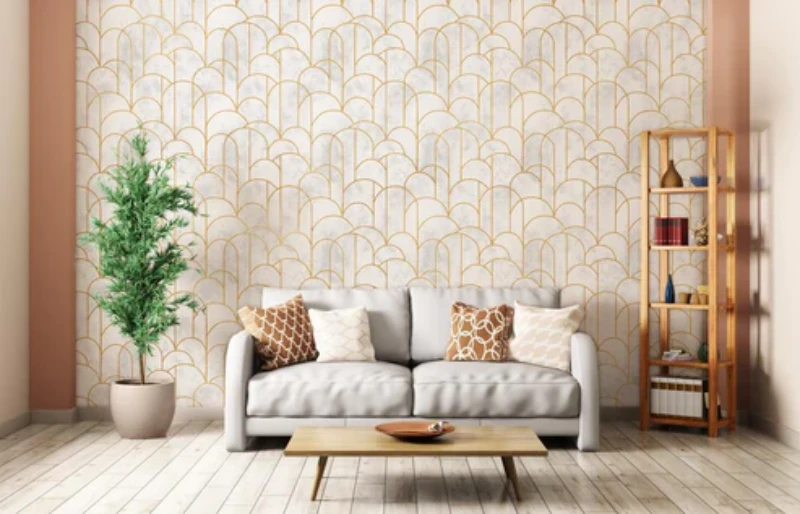
The Three Layers of Lighting
Okay, so what does “layered lighting” actually mean? It’s just a simple strategy for making a room functional and full of atmosphere. You need three types:
- Ambient Light: This is your main, overall light. Think recessed ceiling lights or a central chandelier. The key here is to have it on a dimmer switch. Full blast for cleaning, low and moody for movie night.
- Task Light: This is focused light for doing stuff. A floor lamp next to your favorite reading chair, or a small lamp on a desk. It’s practical.
- Accent Light: This is all about the vibe. It’s the small, warm lamp on a side table, a light pointed at a piece of art, or uplighting on a plant. This is what makes a room feel cozy and complete.
Next Level: Building Layers of Texture
A room with only smooth, flat surfaces will always feel cold and one-dimensional. Texture is what makes a space feel warm and deep; it’s what invites you to touch and experience the room. I think about it from the ground up.
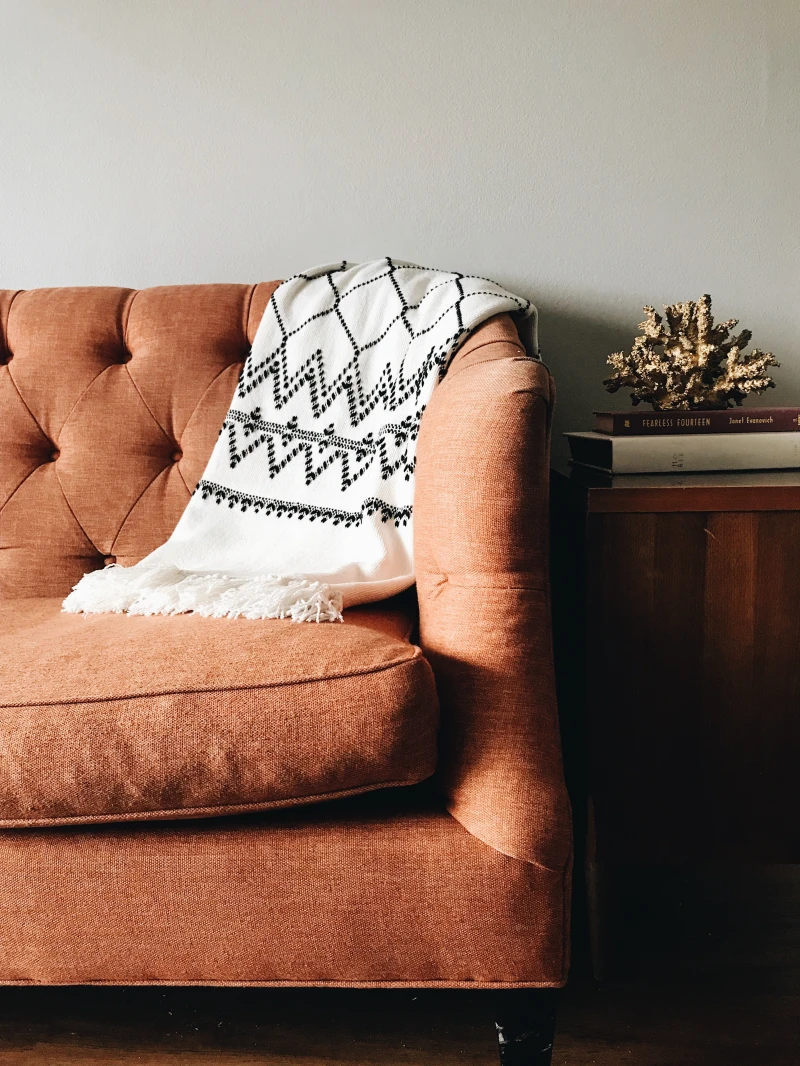
Ground Your Space with a Rug
Hardwood floors are a beautiful, timeless foundation. But leaving them bare in a living room is a rookie mistake. A good area rug is non-negotiable—it defines the seating area, adds softness, and absorbs sound, instantly making the room quieter.
When it comes to picking one, let’s get practical:
- Material Matters: A quality wool rug is a true investment, often running between $800 and $3,000 for a good size, but they are durable, naturally stain-resistant, and feel incredible. If that’s not in the budget, don’t worry! A high-quality polypropylene (a type of synthetic) rug can give you a similar soft feel for a fraction of the price, usually in the $300 to $700 range. For a more laid-back coastal or rustic vibe, natural fiber rugs like jute or sisal are fantastic for texture, though they can be a bit scratchy on bare feet. A little trick is to layer a smaller, softer rug on top of a large jute one to get both the texture and the comfort.
- Size and Placement: This is critical. At a bare minimum, the front two legs of your sofa and any armchairs must be on the rug. This rule connects all the furniture and makes the arrangement feel intentional, not like a bunch of items floating in space. As a general guide, for a standard 8-foot sofa, you should be looking for at least an 8×10 foot rug to properly ground the whole seating area.
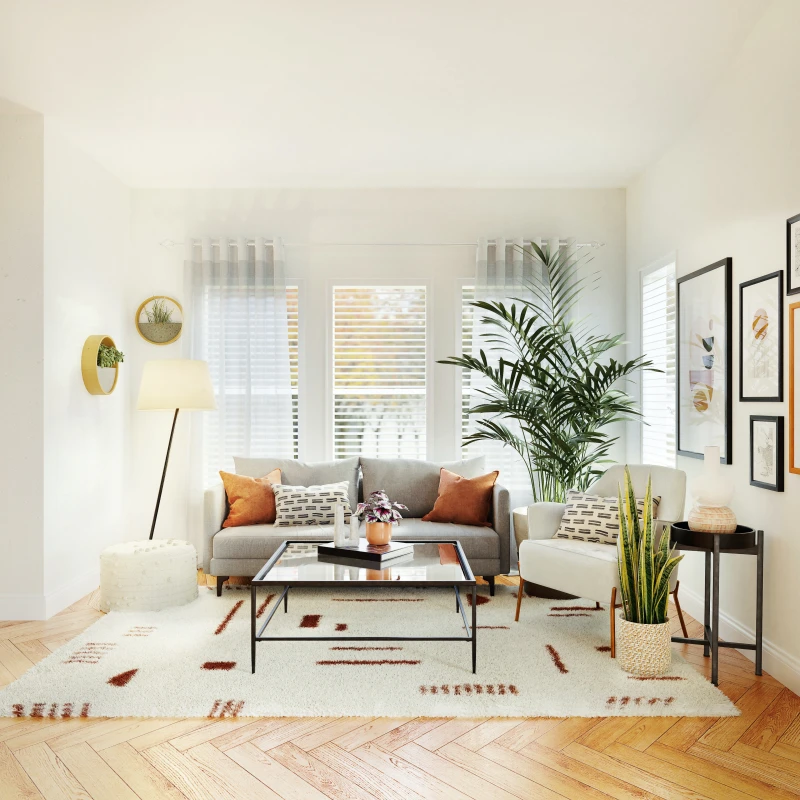
Walls That Wow
Paint is great, but it’s not your only option. For a subtle, organic texture, look into limewash paint. It has a soft, chalky finish with beautiful, subtle movement that flat paint just can’t replicate. You can even find DIY limewash kits for under $100. For a more luxurious, sound-dampening effect, you could consider grasscloth wallcoverings. They’re made from woven natural fibers and bring an incredible tactile quality to a room. It’s definitely a higher-end finish, but it makes a room feel noticeably quieter and more serene.
Comfortable and Durable Furniture
The fabrics on your furniture are a huge source of texture. Think about the soft plushness of velvet, the relaxed feel of linen, or the chunky weave of a boucle. When I’m helping someone choose upholstery, I always look at its durability, which is often measured by a standard industry ‘rub count.’ For a main family sofa, you’ll want something rated for at least 15,000 double rubs. For heavy-duty use (hello, kids and pets!), look for 30,000 or more. This info should be available from the furniture maker.
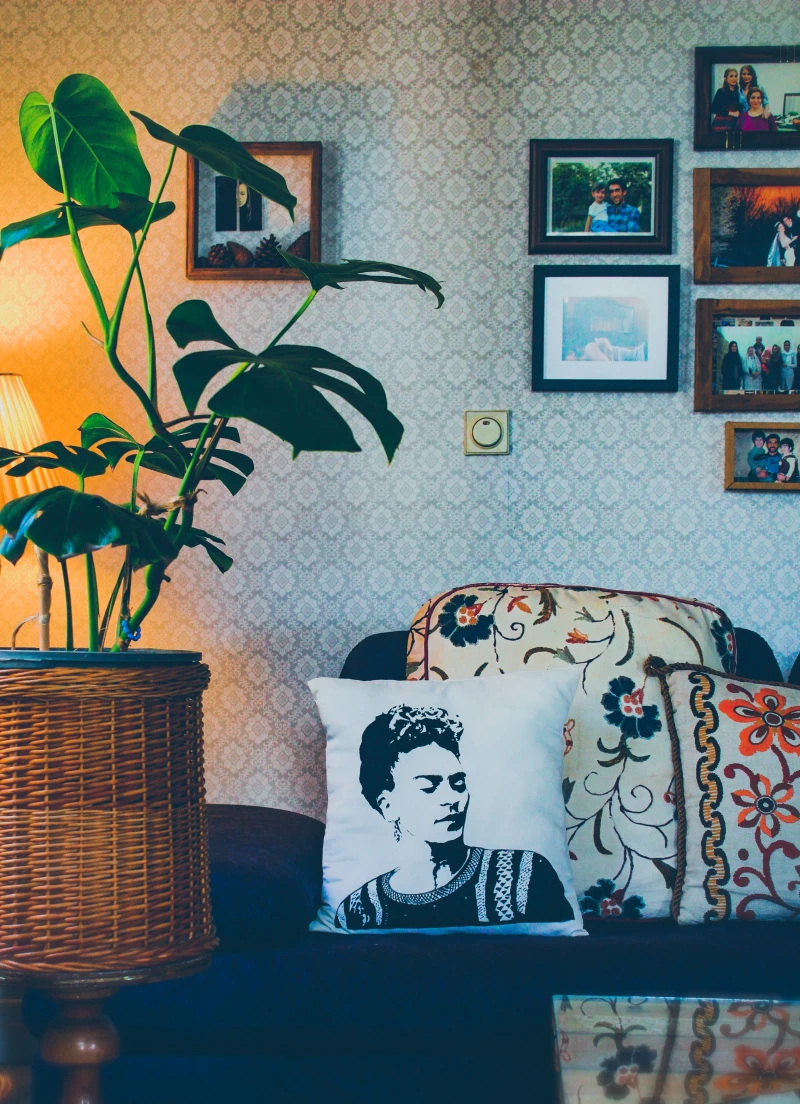
By the way, you don’t have to sacrifice style for durability anymore. I once had a client who was set on a delicate silk velvet for their main sofa, which would have been shredded in a month by their three kids and dog. We found a gorgeous performance velvet from a line using fabrics from brands like Crypton or Sunbrella. It gave them that same luxe feel but was engineered to handle spills and wear. It’s about finding what’s beautiful and practical for your actual life.
The Final Piece: An Arrangement for Connection
How you place your furniture completely dictates the flow and feel of your room. A bad layout can make conversation impossible and just feels… awkward.
The Conversation Zone
A living room is for living, and that usually means connecting with people. Arrange your main seating to encourage conversation—that means sofas and chairs should face each other, at least partially. The sweet spot for distance is somewhere between 4 and 10 feet apart. Close enough to talk without shouting, but far enough to not be knocking knees.
Here’s the most common mistake I see: pushing every single piece of furniture flat against the walls. It creates this weird, empty void in the middle of the room that feels like a dance floor, not a cozy living area. Try this: pull your sofa just six inches off the wall. Even that little bit of breathing room will instantly make the entire space feel more intimate and thoughtfully designed. You’ll be shocked at the difference it makes.
And Yes, We Have to Talk About the TV
Let’s be real, most of us have a TV in the living room. Ignoring it is a mistake. The goal is to integrate it without letting a giant black rectangle become the only focal point. If you have a fireplace, let that be the star. You can place the TV on a low console to the side of the fireplace, so they aren’t competing for attention. Another great option is a media cabinet with doors that can hide the tech away when you’re not using it. Some of the newer smart TVs even have an ‘art mode’ that displays beautiful images when they’re off, which helps them blend in much better. The key is to arrange the furniture for conversation first, and for TV viewing second.

